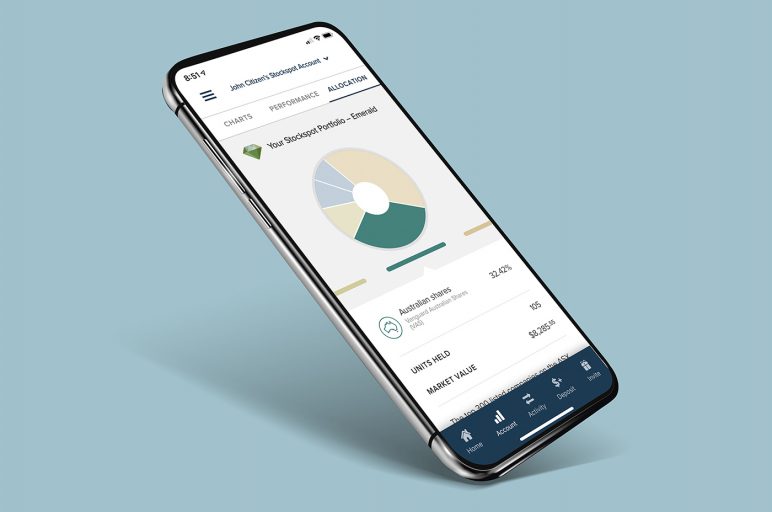Robo advice has grown globally by more than 1,000% over the past 5 years as more people manage their investments with the assistance of digital advice. There is now over $400 billion invested in robo advice around the world.
The share market volatility related to COVID-19 has highlighted significant differences in performance between diversified fund managers. In our March 2022 performance update we showed that the Stockspot portfolios had been able to beat at least 99% of diversified funds over 5 years.
There are 3 main reasons Stockspot clients were able to outperform all diversified funds and robo advisers in Australia over the last 5 years.
- A greater weighting to defensive assets
- Selecting the best low cost ETFs
- Rebalancing at the right time
1. A greater weighting to defensive assets
We know that your mix of assets drives about 90% of differences in returns. It’s therefore critical to have the right mix of growth and defensive assets in any balanced portfolio. Many fund managers (including super funds) had been increasing their exposure to growth assets over the last few years and at the same time including risky assets such as heavily geared property and infrastructure in their defensive allocations. It is always tempting when markets are booming to move up the risk curve to squeeze out some extra performance. But a rapid downturn like in the first quarter of 2020 shows how dangerous this strategy can be.
Listed property and infrastructure fell by 40% across February and March 2020 and were shown not to have the defensive characteristics of bonds and gold. We discussed this in detail in our recent expose of the aggressive investment strategy of super fund Hostplus.
In our view a defensive asset has 2 essential qualities:
1) it holds its value in a downturn and
2) it can be liquidated easily in a stressed market.
This is one reason we increased our allocation to government bonds and gold in 2017 and increased our weighting of gold in 2021. This was at a time where many fund managers were reducing or removing these assets entirely. The strong performance from gold and bonds during the market volatility such as during COVID-19 (gold +43% and government bonds +6%) is one of the key factors that has set Stockspot apart from other robo advisers.
In that period Stockspot’s balanced portfolios averaged a 3-4% return whereas other robo advisers in Australia reported negative returns for their balanced portfolios.
Our defensive approach has also delivered an average of over 7% over both 3 and 5 year periods, outperforming other robo advisers by ~2-3% p.a.
Source: Stockspot, other robo adviser websites. The chart shows comparable ‘Balanced’ portfolios (i.e. growth assets between 40-60%). Stockspot also outperformed across all other portfolio risk types.What to look for?
When assessing which robo adviser you want to look after your money, look for one that maintains an allocation to proven defensive assets during good and bad times. These assets will protect you when share markets have corrections.
In a 2020 AFR article, we shared the following about how Stockspot had been able to protect clients from the brunt of the share market falls.
“They were saved by diversification, with allocations to government bonds and gold helping to offset sharemarket losses”
2. Selecting the best low-cost ETFs
Some of the exchange traded fund (ETF) issuers like Vanguard and Blackrock (iShares) offer their own diversified ETF portfolios.
We are big advocates of the big ETF issuers in Australia, however when they also promote a diversified ETF it is important to recognise that they typically only contain their own products. By being limited to their ETFs you are missing out on superior products elsewhere.
Some other ETF issuers advertise ‘best of breed’ ETF funds but these portfolios only contain their own products, apart from when they don’t have an ETF in a particular asset class.
Our job as an investment advisor offering diversified portfolios is to pick the best ETFs in the market. We are continually researching all 200+ of them and publish our research each year for anyone to view.
We use Vanguard funds in some cases but in others we don’t think they are the best option. For example, we currently use the iShares Global 100 ETF (IOO) as our global share ETF whereas Vanguard uses their own Vanguard International Shares Index Fund (VGS).
iShares Global 100 (IOO) has outperformed Vanguard Global Shares (VGS) by a significant margin over 1, 3 and 5 years. We explain why we prefer IOO in this global ETF comparison.
| ASX CODE | ETF NAME | 1 YEAR RETURN (P.A.) | 3 YEAR RETURN (% p.a.) | 5 YEAR RETURN (% p.a.) |
| IOO | iShares S&P Global 100 ETF | 21.4% | 17.4% | 16.2% |
| VGS | Vanguard MSCI Index International Shares ETF | 13.9% | 13.7% | 13.4% |
We also use the ETF Securities Gold ETF (GOLD) which neither iShares or Vanguard recommend. Gold has played an important role in cushioning our clients from market volatility over the last year.
Having the flexibility to pick the best ETF for each asset class gives Stockspot an advantage that can be seen in our returns. The Stockspot Balanced (Turquoise) portfolio has outperformed the equivalent Blackrock and Vanguard funds by a significant margin over all time periods.
Source: Stockspot, Blackrock, Vanguard websites. The chart shows comparable ‘Balanced’ portfolios (i.e. growth assets between 40-60%). Stockspot also outperformed across all other portfolio risk types.
The following table looks at the performance of Stockspot against equivalent Vanguard diversified funds.
| 1 Year | 3 Years (p.a.) | 5 Years (p.a.) | |
| Stockspot Amethyst | 2.4% | 5.1% | 6.0% |
| Vanguard Conservative | 0.1% | 3.7% | 4.4% |
| Stockspot outperformance | +2.3% | +1.4% | +1.6% |
| 1 Year | 3 Years (p.a.) | 5 Years (p.a.) | |
| Stockspot Turquoise | 6.1% | 7.4% | 7.5% |
| Vanguard Balanced | 2.7% | 5.9% | 6.2% |
| Stockspot outperformance | +3.4% | +1.5% | +1.3% |
| 1 Year | 3 Years (p.a.) | 5 Years (p.a.) | |
| Stockspot Topaz | 9.3% | 9.7% | 9.4% |
| Vanguard Growth | 5.9% | 8.2% | 8.0% |
| Stockspot outperformance | +3.4% | +1.5% | +1.4% |
| 1 Year | 3 Years (p.a.) | 5 Years (p.a.) | |
| Stockspot average outperformance | +3.1% | +1.5% | +1.5% |
What to look for?
Look for a robo adviser that conducts thorough research into the ETF universe, has a regular process for rating and reviewing ETFs, and is independent from the manufacturers of the ETFs.
3. Rebalancing at the right time
Rebalancing is the process of resetting a portfolio back to its target asset weights after asset classes ‘drift’ in value over time. If you need a refresher on why it’s important to rebalance, you can read our recent article. Fund managers have different processes for portfolio rebalancing.
Some fund managers rebalance periodically (i.e. yearly). This is easy for the fund manager to administer but can lead to poor performance for investors who may miss out on better rebalancing opportunities like during the 30% COVID-19 market sell-off.
Other fund managers wait for markets to ‘turn around’ before rebalancing. This is a subjective process and often happens too late. Once market volatility has receded and the economic outlook is clearer, share prices are already higher, so you miss out on buying at low prices.
Stockspot’s rebalancing is threshold based, so when assets move a certain distance from their target weights within a portfolio they are automatically rebalanced. Systematic, threshold based rebalancing has been shown to add 0.91% in portfolio returns.[1] Our rebalancing was in full action mid way through March 2020 when we were trimming gold in portfolios and buying shares. This was done across thousands of portfolios in a fully systematised way.
Then in November 2020 we rebalanced again. This helped to add between 1% and 1.9% in portfolio returns.
What to look for?
Look for a robo adviser with the process, systems and technology to be able to handle portfolio rebalancing during extreme market volatility. Rebalancing a few weeks late could mean a huge difference in returns.
Robo adviser best practice
In summary, there are 3 areas that have set our performance apart from other robo advisers and ETF issuers over the last 5 years.
1. Choice and weighting of defensive assets
2. Selecting the best low-cost products
3. Rebalancing at the right time
If you use a robo adviser or ETFs more broadly in your portfolio, getting these three factors right could mean a very large difference in returns when the going gets tough.
[1] Vanguard Economic and market outlook 2020



